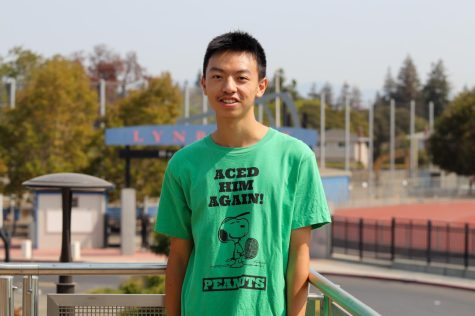2020 U.S. Open: A rare grand slam without Big 3
September 13, 2020
The 2020 U.S. Open Tennis Championships, which started on Aug. 31 with 128 professional tennis players from around the world, have been an unprecedented experience for both players and fans. This year’s competition could not have been more unusual in terms of players, upsets and environment, and I am enjoying every moment of it.
Due to COVID-19, no fans are allowed at the U.S. Open. Only employees, players and their team are permitted on the court to spectate matches. The usual applause after every point is replaced with virtual applause from fans around the world. The crowdless stadium feels disheartening after watching players feed off the energy of the fans as they listen to their reactions after saving three match points, and it makes me realize how much I took the crowds for granted. Nevertheless, the lack of spectators is actually better for most players because it makes the stadium distraction-free; there’s no chance of that one person inevitably shouting during an intense point.
Even more bizarre than the empty stands is the absence of Roger Federer, Rafael Nadal and Novak Djokovic, commonly known in the tennis community as the Big Three, in the semifinals of the U.S. Open. Nadal opted out because of COVID-19 concerns, and Federer is recovering from knee surgery. Djokovic did compete and was the number one seed, but in a shocking turn of events, he was defaulted in the fourth round after accidentally hitting a linesperson with a ball out of frustration.
The Big Three have dominated tennis for the past decade, winning most, if not all, of the grand slams I’ve ever watched. In fact, the 2014 U.S. Open was the last time someone other than the Big Three won a grand slam. I’m disappointed that the three legends didn’t have much time on court; they produce some of the best tennis I’ve ever watched playing against each other.
As disappointing as it is to not have them playing, I am excited that younger players, such as Dominic Thiem, Alexander Zverev and Daniil Medvedev, finally have a chance at winning their first ever major competition. Watching less-experienced younger players may not be as awe-inspiring as watching veterans of the game, but even so, their unique playing styles are still fun to see.
Djokovic, Nadal and Federer each have their specialties, but they all share superhuman consistency and composure during key points that are unrivaled in the younger generation. On the other hand, Thiem, Zverev and other younger players have the advantage of youth, which allows them to endure long rallies and five hour matches and play more aggressively. However, they are prone to errors during key points. Thiem, for example, tried and failed to secure grand slam victories in 2018 French Open, 2019 French Open and 2020 Australian Open, defeating one member of the Big Three in the semifinals but ultimately losing to another one in the finals. I was rooting for him the whole time, but I knew that he was exhausted during finals matches after defeating one of the Big Three in the semifinals. Medvedev also made it to the U.S. Open finals in 2019, losing to Nadal in a five-set thriller.
Despite their flaws, I still enjoy watching younger players hit winners and chase down shots that even the Big Three wouldn’t have gotten. I especially love seeing Thiem hit satisfying down-the-line winners with his one-handed backhand and Medvedev cover the full length of the court to get a drop shot back in play.
Although I’m definitely missing the Big Three this year, watching Thiem, Medvedev and so many other younger players play in a tournament on their own is a dream come true. I am very excited to watch the U.S. Open finals on Sept. 13 with Thiem versus Zverev as they each play their best tennis and fight for the title.




























































Kevin • Oct 7, 2020 at 9:59 am
Hi Elliu,
I loved reading your article! As a (somewhat) fan of tennis myself I really like the sport popping up in the Epic. Keep up the good work!
Sending you all the good vibes,
Kevin